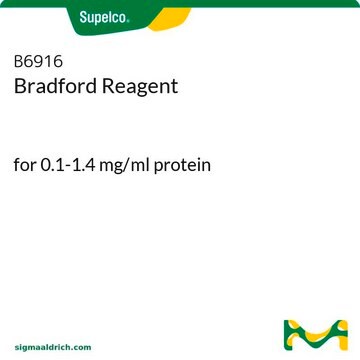T0775
N,N,N-Trimethyl-4-(6-phenyl-1,3,5-hexatrien-1-yl)phenylammonium p-toluenesulfonate
≥95%
Synonym(s):
1,6-Diphenyl-1,3,5-hexatriene-4′-trimethylammonium tosylate, 1-(4-Trimethylammoniophenyl)-6-phenyl-1,3,5-hexatriene p-toluenesulfonate, 4′-(Trimethylammonio)diphenylhexatriene p-toluenesulfonate, TMA-DPH
About This Item
Recommended Products
Assay
≥95%
mp
237 °C (dec.) (lit.)
fluorescence
λex 355 nm; λem ~430 nm in methanol
storage temp.
−20°C
SMILES string
Cc1ccc(cc1)S([O-])(=O)=O.C[N+](C)(C)c2ccc(\C=C\C=C\C=C\c3ccccc3)cc2
InChI
1S/C21H24N.C7H8O3S/c1-22(2,3)21-17-15-20(16-18-21)14-8-5-4-7-11-19-12-9-6-10-13-19;1-6-2-4-7(5-3-6)11(8,9)10/h4-18H,1-3H3;2-5H,1H3,(H,8,9,10)/q+1;/p-1/b5-4+,11-7+,14-8+;
InChI key
ZKARERKEBVSZCX-VMDDUYISSA-M
Looking for similar products? Visit Product Comparison Guide
Biochem/physiol Actions
Storage Class Code
11 - Combustible Solids
WGK
WGK 3
Flash Point(F)
Not applicable
Flash Point(C)
Not applicable
Choose from one of the most recent versions:
Already Own This Product?
Find documentation for the products that you have recently purchased in the Document Library.
Our team of scientists has experience in all areas of research including Life Science, Material Science, Chemical Synthesis, Chromatography, Analytical and many others.
Contact Technical Service








